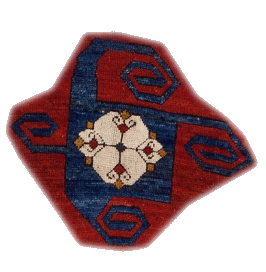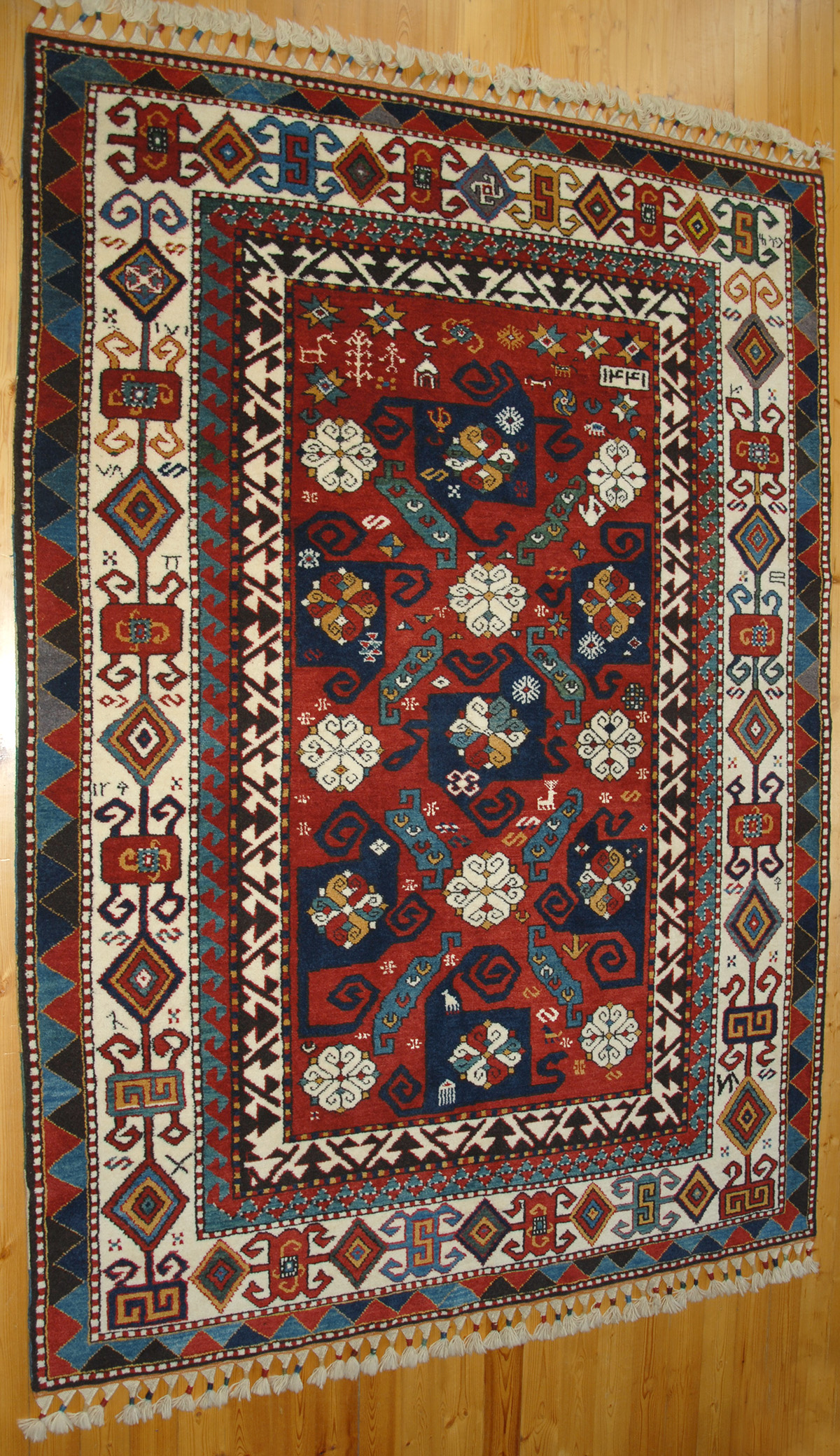
|
Kazak Pinwheel rug Code: KZPW06M Size: 172x243cm Size (ft): 5'7"x7'11" Area: 4.17 m2 Density: totally ~440 000 knots Colors: red, dark blue, aqua green, soft green, lawn green, medium blue, old purple, ivory, dark brown, yellow, apricot (kilim ends). Dyes: madder, weld (Reseda Luteola), cochineal, onion skins, indigo, pomegranate skins, walnut husks, natural dark brown sheep wool, natural ivory sheep wool. Materials: Handcarded and handspun wool for pile, ivory wool warps and soft red wool wefts (two shots, dyed with madder, onion skins and walnut husks. In some parts, undyed ivory wefts have been used), pure silk. 1cm of flatwoven kilim ends at both sides. - wool on wool Knots: Gördes (Turkish, symmetrical) Pile height: 0.5cm Ends: Triangular plaited fringes Inscriptions: The tamgas (tribal seals) of 9 Oghuz tribes are woven on the border: Bayandur, Afshar, Kinik, Salur, Bayat, Kayi, Eymur, Yaparli, Dodurga tamgas. These were the tribes belonging to the Oghuz Confederation. The word "Oghuz" is woven on the upper right corner.  Weaver: Samira, Nargiz Weaving Period: Four months Handwoven in Azerbaijan |
||||||||||
|
Design: The design is distinguished by the typical
"Pinwheel" or Swastika shaped archaic devices located in the central
field. The swastika is an ancient symbol, often interpreted with celestial
connotations. According to some researchers, it represents the heavens
with the center of the swastika as the north star (in fact, it is the
endless knot motif) and the twisting arms of the motif symbolizing the
movement of the constellations around that focal point. It is graphically
portrayed in many weavings from Caucasian Azerbaijan, including the
Bordjalou and Kazak areas. This element is called "Dörd-buynuz" (means
"four rams") or "Damga" (Tamga) in Kazak region. Another theory sees swastika as a highly stylized zoomorphic motif. The element was widely used in early Turkish rugs and in some Central Asian weavings. |
||||||||||
 Each swastika contains the endless knot motif - symbolizing how everything is connected to each other in the Universe. It is also believed to be an old ward against the fixed gaze of the evil eye. The main border contains different motifs: swastika, rams horn, "S" shaped dragon, "X" shaped arrowhead motif (symbol of cardinal microcosm (human spreading his arms and legs symbolizing universe)), tamgas (explained above). In the main field, a nomadic way of life is depicted: a man (in silk), tent, tree of life (in silk), deers (in silk), Rota Fortunae motif (Wheel of Fortune) etc. |
||||||||||
|
pic1. various pinwheel/swastika motives from antique examples
|
||||||||||
Contact us for more information about this rug


.jpg)
.jpg)
.jpg)
.jpg)
.jpg)
.jpg)
.jpg)
.jpg)
.jpg)
.jpg)
.jpg)
.jpg)
.jpg)
.jpg)
.jpg)
Contact us for more information about this rug

|
For more information about the above rug or to place an order please email
vd@azerbaijanrugs.com |